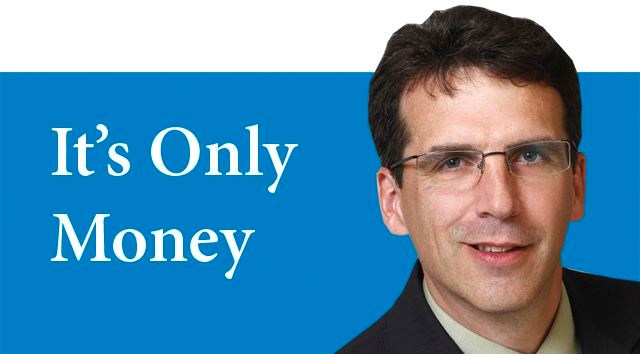I walk past the undesirable suitor probably 20 times a day. Since we sit in close proximity, I hear constant nagging: "Are you afraid?"
Afraid isn't quite the word. Apprehensive? It's as if the beckoning came from some unsightly would-be dance partner with bad teeth, dressed in damp, unwashed laundry.
The tormentor pays handsomely, if I can just bring myself to submit to the interview.
I mean, it's not like I would have to stand close and carry-on an awkward conversation while some series of '70 ballads repeats its haunting melody - actually, it is like that.
I can't see the monsters, but I hear them - sinister, threatening imagined perils of the stomach-knotting sort.
After 26 years filling out forms of all kinds - none of them of little consequence - I still feel it. That restlessness every time, even when the pairing is relatively short once the music starts. The beginning takes all the effort - overcoming the ridiculous hesitation, like the imagined fear of a big hairy spider in the toilet.
But the payback is so enormous. It must have been designed by some clerk in London back before England knew any Elizabeths. And in fact, it was, or some version of it was. The system of laws and taxes, checks and balances that grew out of that era eventually allowed that city to very nearly take over the entire world.
The office of the Exchequer goes back all the way to 1100s in England. Think about it. I am writing this in the language of money - English. But the pay!
In our day, filling out a set of tax forms for a typical Canadian family might take three or four hours in total for an amateur, perhaps half of that or much less for someone with a little experience. If the result is a return of taxes, and rebates totaling $4,000, that is a very nice hourly rate of $1,000.
What other job, however unpleasant, is going to pay you $1,000 an hour? Yes, you can farm it out, but even if you do, there is still the tax preparation before the tax preparation.
Like rushing around to clean the house before the cleaning lady comes in, there's no hiding from at least some of the paperwork before you turn it over to your accountant. But, just do it.
We have largely hired death out to medical professionals, but planning a smooth transition of assets as death approaches is too often left to laypersons. If we are daunted by tax forms, or even a soccer registration online, we might be among those who find taking about and planning for death even more challenging. Well, the law is on it, because your assets are on the line. And, it's complicated. Not the stuff of amateurs. With blended families more common than before, these issues get another level of tricky.
There are a wide variety of estate planning options to consider, including, but not limited to:
Inter vivos and testamentary trusts.
Outright gifts and inheritances.
Joint tenancy with right of survivorship.
Beneficiary designations.
For some there is a strong sense of hope to positively impact the next generation, but unfortunately for many, the right plans often aren't in place to ensure that happens smoothly and in a way that supports family harmony. When this type of disconnect exists between hopes and execution, it leaves the door wide open for conflicts to arise that may negatively impact family dynamics.
Therefore, it's crucial to connect the dots and identify specific goals for each beneficiary, and then work with qualified estate planning professionals to find the best ways to make them come about, such as trusts.
The very word might intimidate, but trusts are an effective way to distribute assets, in a way which is tailored to individual preferences.
The creation of a trust occurs through an individual transferring assets (which may include investments, principal residences, vacation properties, shares of private companies and even family valuables) to a trustee, who then becomes responsible for administering those assets strictly for the benefit of the beneficiaries.
The trust sets out a relationship between the trustee and the beneficiaries where the trustee has legal title to the particular asset and the beneficiaries gain the use of it according to trust agreement guidelines.
In general, there are two main types of trusts: inter vivos and testamentary. Don't be scared. We will discuss these in greater detail next week and try to defog the mystery a little more.
Where opinions are expressed, they are the writer's, and not necessarily those of RBC Dominion Securities. This publication is not intended as nor does it constitute tax or legal advice. Readers should consult a qualified legal, tax or other professional advisor to implement a strategy.



